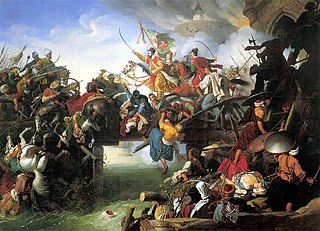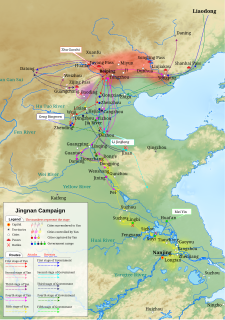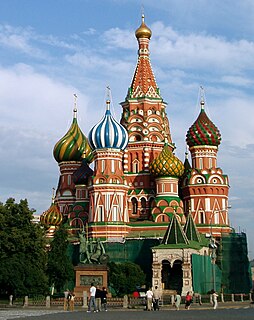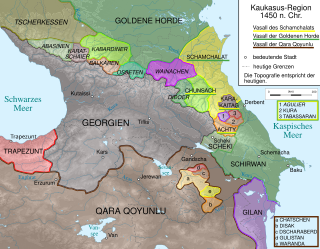 W
WThe Battle of Aradeti was fought between the armies of the Kingdom of Georgia and the Principality of Samtskhe at the place of Aradeti on August 1483.
 W
WThe Battle of the Maule was fought between a coalition of Mapuche people of Chile and the Inca Empire of Peru. Traditionally this battle is held to have occurred near what is now Maule River, in Central Chile. The account of Garcilaso de la Vega depicts the three-day battle, which is generally believed to have occurred in the reign of Tupac Inca Yupanqui.
 W
WThe Cologne Diocesan Feud, also called the Neuss War or Burgundian War, was a conflict, which began in 1473, between the Archbishop of Cologne, Ruprecht of the Palatinate and the Landstände of his archbishopric that began in 1473. As a result of the involvement of Charles the Bold of Burgundy and, eventually, the Holy Roman Empire the matter at times assumed a European dimension. It finally ended when Ruprecht died in 1480.
 W
WThe Dano-Hanseatic War from 1426–1435 was an armed trade conflict between the Danish-dominated Kalmar Union and the German Hanseatic League (Hansa) led by the Free City of Lübeck.
 W
WThe Forty Years' War was a military conflict fought between the Burmese-speaking Kingdom of Ava and the Mon-speaking Kingdom of Hanthawaddy Pegu. The war was fought during two separate periods: 1385 to 1391, and 1401 to 1424, interrupted by two truces of 1391–1401 and 1403–1408. It was fought primarily in today's Lower Burma and also in Upper Burma, Shan State, and Rakhine State. It ended in a stalemate, preserving the independence of Hanthawaddy, and effectively ending Ava's efforts to rebuild the erstwhile Pagan Kingdom.
 W
WThe fourth Chinese domination was a period of the history of Vietnam, from 1407 to 1427 during which the country was ruled by the Chinese Ming dynasty. It was the result of the conquest of the region in 1406 to 1407. The previous periods of Chinese rules, collectively known as the Bắc thuộc periods in Vietnam, were longer-lasting, constituting much of Vietnam's history from 111 BC to 939 AD. The fourth Chinese occupation of Vietnam was eventually ended with the establishment of the Lê dynasty.
 W
WThe Granada War was a series of military campaigns between 1482 and 1491, during the reign of the Catholic Monarchs Isabella I of Castile and Ferdinand II of Aragon, against the Nasrid dynasty's Emirate of Granada. It ended with the defeat of Granada and its annexation by Castile, ending all Islamic rule on the Iberian peninsula.
 W
WThe Hook and Cod wars comprise a series of wars and battles in the County of Holland between 1350 and 1490. Most of these wars were fought over the title of count of Holland, but some have argued that the underlying reason was because of the power struggle of the bourgeois in the cities against the ruling nobility.
 W
WThe Hundred Years' Croatian–Ottoman War is the name for a sequence of conflicts, mostly of relatively low intensity, between the Ottoman Empire and the medieval Kingdom of Croatia, and the later Habsburg Kingdom of Croatia.
 W
WJingnan campaign, or Jingnan rebellion, was a civil war in the early years of the Ming dynasty of China between the Jianwen Emperor and his uncle Zhu Di, the Prince of Yan. It started in 1399 and lasted for three years. The campaign ended after the forces of the Prince of Yan captured the imperial capital Nanjing. The fall of Nanjing was followed by the demise of Jianwen Emperor, and Zhu Di was crowned the Yongle Emperor.
 W
WThe Lam Sơn uprising was the uprising led by Lê Lợi in Vietnam of 1418–1427 against Ming rule.
 W
WThe Wars in Lombardy were a series of conflicts between the Republic of Venice and the Duchy of Milan and their respective allies, fought in four campaigns in a struggle for hegemony in Northern Italy that ravaged the economy of Lombardy and weakened the power of Venice. They lasted from 1423 until the signing of the Treaty of Lodi in 1454. During their course, the political structure of Italy was transformed: out of a competitive congeries of communes and city-states emerged the five major Italian territorial powers that would make up the map of Italy for the remainder of the 15th century and the beginning of the Italian Wars at the turn of the 16th century. They were Venice, Milan, Florence, the Papal States and Naples. Important cultural centers of Tuscany and Northern Italy—Siena, Pisa, Urbino, Mantua, Ferrara—became politically marginalized.
 W
WThe Miao rebellions were a series of rebellions of the indigenous tribes of southern China against the Ming Dynasty. The Ming defeated the rebels with overwhelming force. Later, under the Qing Dynasty, another series of Miao rebellions broke out.
 W
WThe Ming–Turpan conflict were a series of conflicts between the Ming Dynasty and Khanate of Turpan that erupted due to disputes over borders, trade and internal succession to the throne of Turpan.
 W
WThe first conflict between Moldavia and the Ottoman Empire for which there is a historical account occurred during the reign of Alexandru cel Bun, in 1420, when the Ottomans tried to capture Chilia. The attack was unsuccessful.
 W
WThe Münster Diocesan Feud, or simply Münster Feud, was a dispute that took place between 1450 and 1457 over the appointment to the bishop's throne in Münster, and hence the rule of the diocese. The cause was the death of the previous prince-bishop, Henry II of Moers. The opposing candidates were his brother Walram of Moers, Eric of Hoya, and Conrad of Diepholz. They were supported by their families with Count John of Hoya, Archbishop Dietrich II of Moers and Prince-Bishop Rudolf of Diepholz at their respective heads. In addition, there were also external allies. Within the diocese the Stände, namely the cathedral chapter and the town of Münster, played an independent role at times. In the end neither candidate was able to succeed to the office.
 W
WThe Muscovite Civil War, or Great Feudal War, was a prolonged conflict that cast its shadow over the entire reign of Vasily II of Moscow. The two warring parties were Vasily II, the Grand Prince of Moscow, as one party, and his uncle, Yury Dmitrievich, the Prince of Zvenigorod, and the sons of Yuri Dmitrievich, Vasily Kosoy and Dmitry Shemyaka, as the other party. In the intermediate stage, the party of Yury conquered Moscow, but in the end, Vasily II regained his crown. It was the first civil war in the history of Muscovy, whose largely peaceful rise had been predicated on a lack of conflict within the ruling family.
 W
WOttoman wars in Asia refers to the wars involving the Ottoman Empire in Asia. Ottoman Empire was founded at the beginning of the 14th century. Its original settlement was in the north west Anatolia where it was a small beylik (principality). Its main rival was Byzantine Empire. In 1350s Ottomans were able to cross the Dardanelles strait and eventually they conquered whole south east Europe. Although they mainly concentrated on Europe, they also fought in Asia.
 W
WThe Ottoman–Hungarian Wars were a series of battles between the Ottoman Empire and the medieval Kingdom of Hungary. Following the Byzantine Civil War, the Ottoman capture of Gallipoli, and the decisive Battle of Kosovo, the Ottoman Empire was poised to conquer the entirety of the Balkans and also sought and expressed desire to expand further north into Central Europe beginning with the Hungarian lands.
 W
WThe First Ottoman–Venetian War was fought between the Republic of Venice and her allies and the Ottoman Empire from 1463 to 1479. Fought shortly after the capture of Constantinople and the remnants of the Byzantine Empire by the Ottomans, it resulted in the loss of several Venetian holdings in Albania and Greece, most importantly the island of Negroponte (Euboea), which had been a Venetian protectorate for centuries. The war also saw the rapid expansion of the Ottoman navy, which became able to challenge the Venetians and the Knights Hospitaller for supremacy in the Aegean Sea. In the closing years of the war, however, the Republic managed to recoup its losses by the de facto acquisition of the Crusader Kingdom of Cyprus.
 W
WThe Second Ottoman–Venetian War was fought between the Islamic Ottoman Empire and the Republic of Venice for control of the lands that were contested between the two parties in the Aegean Sea, Ionian Sea, and the Adriatic Sea. The war lasted from 1499 to 1503.
 W
WThe Polish–Lithuanian–Teutonic War, or Great War, occurred between 1409 and 1411 between the Teutonic Knights and the allied Kingdom of Poland and Grand Duchy of Lithuania. Inspired by the local Samogitian uprising, the war began by Teutonic invasion of Poland in August 1409. As neither side was ready for a full-scale war, Wenceslaus IV of Bohemia brokered a nine-month truce. After the truce expired in June 1410, the military-religious monks were decisively defeated in the Battle of Grunwald, one of the largest battles in medieval Europe. Most of the Teutonic leadership was killed or taken prisoner. Although they were defeated, the Teutonic Knights withstood the siege on their capital in Marienburg (Malbork) and suffered only minimal territorial losses in the Peace of Thorn (1411). Territorial disputes lasted until the Peace of Melno of 1422. However, the Knights never recovered their former power, and the financial burden of war reparations caused internal conflicts and economic decline in their lands. The war shifted the balance of power in Central Europe and marked the rise of the Polish–Lithuanian union as the dominant power in the region.
 W
WThe Russo-Kazan Wars was a series of wars fought between the Khanate of Kazan and Muscovite Russia from 1439, until Kazan was finally captured by Ivan the Terrible and absorbed into Muscovy in 1552.
 W
WSkanderbeg's rebellion was an almost 25-year long anti-Ottoman rebellion led by the renegade Ottoman sanjakbey Skanderbeg in the territory which belonged to the Ottoman sanjaks of Albania, Dibra and Ohrid. The rebellion was the result of initial Christian victories in the Crusade of Varna in 1443. After Ottoman defeat in the Battle of Niš, Skanderbeg, then sanjakbey of the Sanjak of Debar, mistakenly believed that Christians would succeed in pushing the Ottomans out of Europe. Like many other regional Ottoman officials, he deserted the Ottoman army to raise rebellion in his sanjak of Dibra and the surrounding region. Initially, his plan was successful and soon large parts of the Sanjak of Dibra and north-east parts of the Sanjak of Albania were captured by the rebels who also fought against regular Ottoman forces in the Sanjak of Ohrid. According to Oliver Schmitt, Castrioti was allowed to leave the Ottoman army thanks to the intervention of his aunt Mara Branković, who was his mother's sister and one of the wives of sultan Murat II.
 W
WThe Soest Feud, or Feud of Soest, was a feud that took place from 1444 to 1449 in which the town of Soest claimed its freedom from Archbishop Dietrich of Cologne (1414–1463), who tried to restore his rule. The town of Soest opposed this attempt on 5 June 1444 by accepting a new suzerain, John I, the Duke of Cleves-Mark, who guaranteed the town its old rights as well as new ones. As a result Emperor Frederick III imposed the imperial ban on the town. The victory of the town meant that Soest had de facto more freedom than a free imperial city until it was annexed by Prussia, but at the same time it had to forfeit its economic power because it was now an enclave within Cologne's territory.
 W
WAfter the devastating invasions by Timur and subsequent enfeeblement of the Kingdom of Georgia, it soon faced a new threat. Timur's death in 1405 marked the beginning of the end of his Empire, unified only by fear and blood of the subjected peoples. Turkomans, particularly the Kara Koyunlu clan, were among the first to rebel against Shah Rukh who ruled most of the Persia and Mawerannahr. Qara Yusuf, ruler of the Kara Koyunlu, defeated Shah Rukh, captured Baghdad, and repulsed Timurids from western Persia. After they established themselves as the new leading power in the middle east. They took advantage of the temporary weakness of Georgians and launched attacks against them, apparently in which, George VII of Georgia was killed. Constantine I of Georgia, fearing further encroachment, allied himself with the Shirvanshah Ibrahim I to counter Turkoman advance and engaged them in the Battle of Chalagan, in which he was defeated and taken captive. In captivity Constantine behaved very proudly, which infuriated Qara Yusuf to such an extent, that he ordered his, his half-brother David's and 300 Georgian nobles' execution.
 W
WThe Uprising of Konstantin and Fruzhin was the earliest Bulgarian uprising against Ottoman rule. It was organized in the early 15th century by two Bulgarian nobles and was supported by a Christian coalition, but failed to liberate Bulgaria.
 W
WThe Utrecht Schism was a diocesan feud in the Prince-Bishopric of Utrecht from 1423 to 1449. The legitimate prince-bishop of Utrecht was at issue. The war of succession was fought by Zweder van Culemborg and his brother Walraven van Meurs against Rudolf van Diepholt. The conflict mixed with the existing Utrecht factionalism between the Lichtenbergers and Lokhorsten and with the Hook and Cod wars raging in the County of Holland. Some scholars consider the Utrecht Schism to have ended in 1429.
 W
WThe Vienna Geserah was the planned annihilation of the Jewish communities in the Archduchy of Austria in 1421 on the orders of Duke Albrecht V, the later Roman-German King Albrecht II. The annihilation was planned by forced baptism, expulsion and execution by burning. The name derives from a Jewish chronicle called "Wiener Gesera" and is also used for the events described therein.
 W
WThe Wars of the Roses were a series of English civil wars for control of the throne of England fought between supporters of two rival cadet branches of the royal House of Plantagenet: the House of Lancaster, represented by a red rose, and the House of York, represented by a white rose. Eventually, the wars eliminated the male lines of both families. The conflict lasted through many sporadic episodes between 1455 and 1487, but there was related fighting before and after this period between the parties. The power struggle ignited around social and financial troubles following the Hundred Years' War, unfolding the structural problems of bastard feudalism, combined with the mental infirmity and weak rule of King Henry VI which revived interest in the House of York's claim to the throne by Richard of York. Historians disagree on which of these factors was the main reason for the wars.